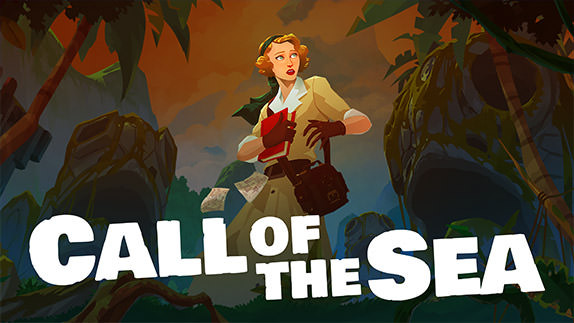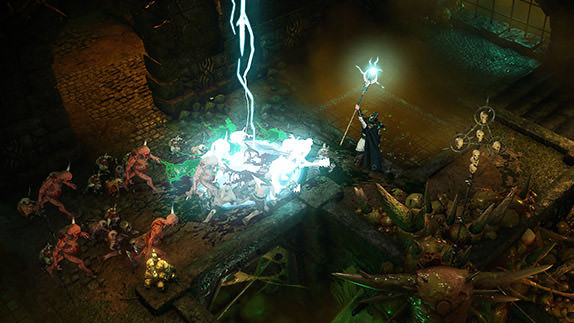Dreadnought Review

 By Kevin Mitchell | January 22, 2018
By Kevin Mitchell | January 22, 2018
It has been years since I initially stepped into a private room on the upper floor at E3 to be one of the first people to go hands-on with a new team-based shooter. Focusing primarily on the highly competitive online gaming scene, Dreadnought pits players against each other in massive capital ships. Larger ships mean you won't be performing tight barrel rolls or dogfighting, but the slower-paced action is both thrilling and addicting. I'll admit, Dreadnought is one of the only team-based competitive online games that I have played in one form or another for years, and yet I still feel the need for more.
Although Dreadnought is a free-to-play game, the team-focused gameplay is leagues above anything else on the market. Let's be honest, there aren't many titles out there that let you take command of massive capital spaceships. The five-on-five PvP gameplay is set across three primary game modes. There is a PS4-exclusive horde mode that is limited to three players and a cooperative training mode where you'll only face AI-controlled ships, instead of other players. Regardless of the mode, I couldn't get enough of Dreadnought, and at times, that became an issue due to the low population of players (at least on PlayStation 4).
At its core, Dreadnought prioritizes tactical strategy, which means if your team doesn't communicate or work as one, you'll most likely be on the other end of a complete and utterly lop-sided match. I've been on both sides of these types of games, and regrettably, it's not fun either way. Whether you are looming in the shadow of an asteroid, Saturn, or engaging in fights on various planet surfaces, Dreadnought's element of verticality adds new dimensions to the game. There is nothing more enjoyable than flanking your opponent and peering over a nearby canyon and launching missiles at unsuspecting prey.
Team Deathmatch is the most basic game mode, as you battle against other players to reach a set score before the time limit, while Onslaught adds AI-controlled ships that contribute to your team's score when destroyed. Blowing up a mothership can quickly turn a match in your favor, so you need to coordinate correctly to protect your ship while attacking the enemy team. Team Elimination changes the formula by having players spawn as tiny one-man fighters/bombers upon losing their capital ship. The round ends when one team loses all of their players. Regardless of the PvP game mode you play, the AI will fill open spots. Havoc mode tasks three players to complete increasingly more difficult waves of AI-controlled enemies. I dare anyone reading this review to get past wave nine on their first attempt.
As you may find in a role-playing game or modern-day shooters, the ships in Dreadnought are divided into set classes. The backbone of the armada is the Dreadnought, a literal bullet-sponge, able to withstand an insane amount of punishment but also able to dish it out as well. The Artillery Cruiser is a sniper equivalent, being able to swiftly decimate all other ships at long range, at the cost of decreased close-range effectiveness. The small and agile Corvette is faster than any other ship but also can cloak. Even with its smaller frame, it can take out an unsuspecting Dreadnought single-handedly. The Tactical Cruiser is the primary support ship and typically avoids direct conflict, serving as a team's healer. The Destroyer is your jack-of-all-trades ship, capable of being both an offensive powerhouse as well as defensive support based upon the modules you have equipped. While most of my time has been spent using the Destroyer, the Artillery Cruiser seems to be the most popular option for streamers on Twitch.
With teams currently being limited to five players in the PvP modes, you'll want to coordinate and have a balanced team if possible. The assigned roles for each class are self-explanatory, but without teamwork, you aren't going to win many matches. At any given moment, you can have a set of five different ships available to use in matches. If you find yourself or your team struggling, it may be a good idea to switch to a different ship upon dying. Of course, merely using a different class isn't going to change the tide of a match, as skilled players can adapt to your tactics. Instead of pooling all players together for matchmaking, Dreadnought is broken up into different tiers. The five-tier system for ships helps to ensure a smooth matchmaking experience, but that isn't always the case—more on that below. As you complete matches and earn experience and currency, you can upgrade your current ship by researching new modules and altering your loadout. Once everything is purchased, you'll be able to buy a new ship, depending upon the various ship designers in the game. Following down the branching tree for the starting Destroyer, I was eventually able to purchase a new Destroyer and a new Dreadnought, even though I never played the Tier I Dreadnought. As you progress to higher tiers, more abilities become available, especially those that can debuff opponents and also disable specific systems. While I may focus on straight firepower at Tier I, I can alter my approach to engagements by temporarily disabling an opponent's energy and decreasing their firepower. At the precise moment, I may launch missiles or warp right beside them to unleash havoc with my broadside cannons. Without energy, shields can't be raised, making them an easy target.
Dreadnought does not contain loot boxes, but you can spend real-life currency on legendary ships and visual customization options for your commander and ships. You may think that being able to purchase ships would be an advantage, but they come with their own set of limitations that help keep the balance. For example, The Hactar is a currently free legendary tactical cruiser. You are unable to upgrade or alter the loadout; in fact, it can't even heal other ships, the primary role of the Tactical Cruiser. While I don't have any issues with spending money on customization options, the current system does need to be modified. When purchasing a coating (skin) or an emblem for the front of your ship, it does not become available for all classes. It seems weird that I have to purchase the same item multiple times. Outside of that, you can also buy experience boosts that can last across a variable number of days. This isn't an alien concept for free-to-play games, and honestly, I didn't feel like it alleviated the grind at the highest tiers. Which of course leads me to my main concerns with the game, after you start progressing through the lower tiers. Dreadnought truly shines in the higher tiers, giving you plenty of different options in terms of ship loadout, but eventually, you'll hit a wall. For myself, it was trying to move from Tier III to Tier IV. The cost of the Tier IV ships was just so much higher than anything else in the game, and even after winning roughly 90% of my matches for a week straight during our live streams, it still feels like you'll be grinding for weeks more just to unlock the base ships.
Simply Put
Dreadnought's gameplay is such a powerful experience, and it is a shame that the current population on PlayStation 4 is not what the game deserves. Matchmaking can take anywhere from 5-10 minutes, and even then, I've never had a full 5-on-5 player match without at least one AI-controlled ship. Hopefully, the developers can help alleviate the grind at the higher tiers and look to adjust how the customization system works, opening up purchased items across all classes.
Note: Dreadnought was reviewed on PlayStation 4. A digital copy of the game was purchased by SelectButton.




